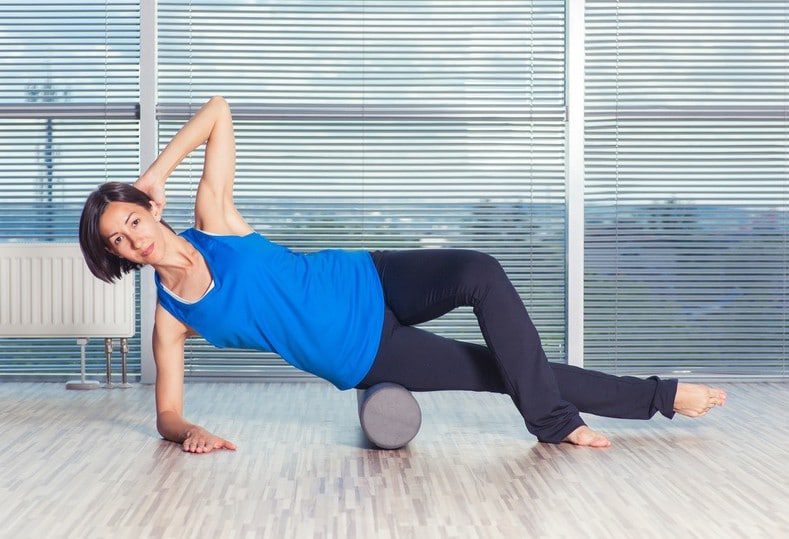First used in 1987 by physical therapist Sean Gallagher, foam rollers were introduced as self-massage tools. Since 2009, they have been used more for their therapeutic role in fascial stretching. Over the course of time, the appearance of foam rollers has changed to incorporate different foam densities, shapes, lengths, etc. based on the desired purpose.
Benefits of Using a Foam Roller
The idea behind the foam roller is to improve range of motion to the limb or body part by increasing the flexibility of muscle and fascia tissues. There is some evidence to support enhancement in joint flexibility as a pre-exercise warm-up and cool down. However, foam rolling may be more effective when combined with static stretching after exercise. (A dynamic warm up is recommended for pre-exercise warm-up.)1
Take a look at this comprehensive article if your interested in learning more about the benefits of flexibility training, especially for athletes.
Why a Foam Roller Helps with Recovery
Self-massage or myofascial release allows improved blood circulation to the area for healing, especially if there are any adhesions within the superficial tissues that can be “broken up” by the foam rolling. The pressure is also graded by how much force the user applies through the foam. This allows relief to the sore muscles by using a lighter pressure or breaking up more restrictions in the fascial system through increased force.
Sample Foam Roller Exercises
Check out this video in order to see some foam rolling exercises specific to the quadriceps, IT Band, hamstrings, and thoracic spine, as well as a few others. And as always, feel free to contact us at SetPT if you have any questions about how to start using a foam roller and seeing the benefits.
References:
- Cheatham SW, Kolber MJ, Cain M, Lee M. The effects of self-myofascial release using a foam roll or roller massager on joint range of motion, muscle recovery, and performance: a systematic review. IJSPT. 2015;10(6):827-838.






